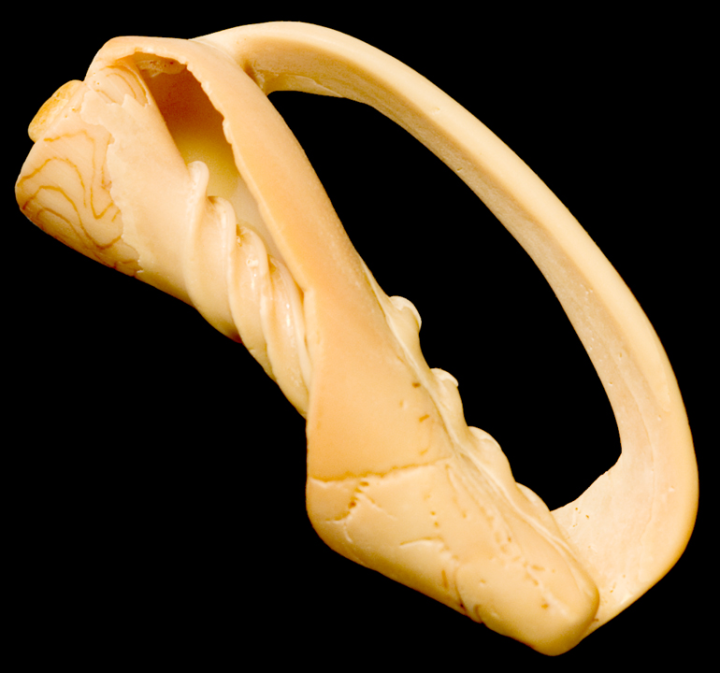
Shellflower I

Attentive readers will remember that in January of this year, the family and I spent some time in Gippsland, Australia, in particular on the beach at Cape Conran park. On the big beach there where they surf, you can find remarkable sea-shells. The process by which the waves slowly turn them to white sand is transparent here, as you can pick up all sorts of shells once cone-shaped which are eroding away, revealing in the process unsuspected beauty of internal structure. They look like flowers. I brought a bunch home and I’m trying to photograph them.
It’s quite a challenge. I think the right technique is going to be the one invented by Alex Waterhouse-Hayward, of using a flatbed scanner; see how it worships a rose here. Alex says “The depth-of-field is immense, just hang the flower over the scanner and turn the lights out”. Yeah, well, he’s got more technique than I do obviously. How to hang a seashell over a scanner in such a way that it holds still is not self-evident; I’m now looking for Plan C. Also I have depth-of-field problems. But my first few attempts, although fatally flawed, are damn visually dramatic so I’ll keep plugging away at that.
For the picture above, I put the shells on a black cushion and the Tamron 70-210mm on the Pentax DSLR, clamped it onto my pretty-good tripod, told the camera to use f/8 and pick its own shutter speed, which with interior light was several seconds at ISO 200 which is OK with the shutter on delayed-release and me at the other end of the room. Plus fairly heroic Photoshopping to subtract the cushion textures.
I expect this project to combine extreme phototech geeking with worship at the temple of Natural Beauty. What’s not to like?
Comment feed for ongoing:
From: atotic (Mar 14 2007, at 02:58)
Bill Atkinson has spent a lot of time finding the best way to photograph rocks. He has published a book of photos called "Within the stone". In the appendix, he documents his photographic technique that you can copy. He also documents the way the book was printed, which is very cool, the colors are unlike any other book I've seen.
http://www.billatkinson.com/SpecialOffers.html
Aleks
[link]
From: michael thorne (Mar 14 2007, at 13:07)
To eliminate the background texture, use an old darkroom technique - create a line mask. Use a high contrast filter to give you an image with few gradations then start manually reducing them to two.
Clear/white and black then overlay the mask on the original image and have the subject of the picture come through the clear/white space.
[link]
From: Justin Watt (Mar 15 2007, at 09:50)
Leaves are fun to scan as well:
http://justinsomnia.org/2005/09/scanner-art/
And nuts (actually this is a photo):
http://justinsomnia.org/2006/09/found-typography/
In the latter, I decided not to blacken the background because I actually liked the texture it added, but I did clean up the center of the eucalyptus nut.
[link]